

EXPLORE BY TOPIC:
  Our top 10 resources
Our top 10 resources
  Childhood / Early Life
Childhood / Early Life
  Chronic Stress
Chronic Stress
  Education
Education
  Food Security
Food Security
  Genetics
Genetics
  Jobs & Work
Jobs & Work
  Housing / Neighborhoods
Housing / Neighborhoods
  Income & Wealth
Income & Wealth
  Race / Racism
Race / Racism
  Social Inclusion
Social Inclusion
  Policy & Change
Policy & Change





Buy the DVD
e-Newsletter
FAQs
Contact Us
Site Map
Home

|
 |


|
Background: Perhaps the biggest predictor of one's health is one's wealth. It's not just the poor who are suffering; every step down the class pyramid corresponds to worse health. Study after study has shown that those at the top of the class pyramid live on average longer, healthier lives than the rest of us. The middle classes fare worse than those on the top, and the poor get sick more often and die sooner.
The greater the inequality in a society, the steeper the gradient. Currently, the United States has the greatest inequality among rich countries - and the worst health inequities. People in the middle are twice as likely to die prematurely (before age 65) as those on top; people at the bottom are three times as likely.
The life expectancy of American men in the highest income group is 8 years longer than for men in the lowest income group, two and a half years longer than for the second highest income group. Wealthy women live almost 7 years longer than poor women. Children in low-income families are seven times as likely to be in poor or fair health as those in high-income families. Poorer adults are three times as likely to have a chronic disease that limits their activity; twice as likely to have diabetes, and are nearly 50% as likely to die of heart disease.
Wealth doesn't just bring more material comfort, it also provides financial security and access to resources that promote opportunities for better health. Higher income affects health at every age, from the beginning of life to adulthood and old age. For adults, wealth is tied to neighborhood quality, work conditions, food security, access to medical care, and the availability of buffers against stress.
For children, the impact of advantages or disadvantages is even greater, because the effect on health is cumulative. The greater proportion of life one spends at the upper end of the class spectrum, the more benefits accrue. Children from affluent families are more likely to grow up in a house owned by their parents and to live in a neighborhood with healthy food options, safe places to play, good schools, libraries and other quality public services – all of which help set them on the path to a successful, healthy life.
Children from less affluent families not only lack these advantages, they are more likely to experience conditions that limit their health and ultimately their life chances: injuries, inadequate or delayed health care, physical inactivity, poor nutrition, insecure or substandard housing, and exposure to toxins, high lead levels and violence. The influence of wealth on health begins even before a child is born, shaping the quality of prenatal care an expectant woman receives, her level of stress during pregnancy and her likelihood of delivering a premature or low birth weight baby.
Wealth is an important determinant of health because it has such a profound effect on other conditions. Yet at every socioeconomic level, African Americans, Native Americans and other people of color fare worse than their white counterparts. Racism as a stress factor independent of class partially explains this, but racism – for example, in the form of residential segregation or job discrimination – also directly affects wealth.
Today, the wealth gap in America is growing. The average CEO makes more than 250 times the average worker’s salary, and the top 1% of American households holds more wealth than the bottom 90% combined. In the last 25 years, the income of top earners has increased 81%, while wages for those on the low end of the pay scale have stagnated or declined.
Our health has followed suit. In 1980, the U.S. ranked 14th in the world for life expectancy. In 2007 we ranked 29th. One out of every five American children lives in poverty. Many of the countries that rank higher than we do have policies that protect workers, support families, and provide a safety net for their citizens. These policies typically address income and wealth inequality in one of two ways: (1) they reduce the overall gap so that everyone has sufficient resources to prosper and maintain control over their lives or (2) they loosen the connection between health and wealth by making certain resources available to everyone, not dependent on a family's individual assets.
Examples of policies to reduce the gap include a guaranteed living wage, earned income tax credits, family supports, guaranteed paid vacation and sick leave, secure pensions, and severance pay and job training for unemployed workers. Examples of policies to loosen the wealth-health relationship include universal preschool, better land use and zoning policies, school financing reform, universal health insurance, and stronger environmental protections and better enforcement.

|
|
|
| |
|
Income & Wealth: 0 items found |
 Mental health hits home: Is America driving you crazy and then killing you? Mental health hits home: Is America driving you crazy and then killing you? 
ESSAY by Stephen Bezruchka University of Washington professor and emergency room doctor Bezruchka considers how social and economic factors contribute to astronomical rates of mental illness in the U.S., particularly among children. |
 |
 Michigan Prevention Research Center Michigan Prevention Research Center 
WEB SITE Based out of the Institute for Social Research at the University of Michigan, the MPRC is dedicated to a program of prevention research on the problems of employment, economic stress, and well-being throughout the life course. MPRC seeks to extend scientific understanding of the links between conditions of employment and mental and physical health, while at the same time, expanding the policy and practice options available to both the public and private sector. |
 |
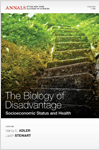 Money, schooling, and health: Mechanisms and causal evidence Money, schooling, and health: Mechanisms and causal evidence 
Ichiro Kawachi, Nancy E. Adler, and William H. Dow In this essay, the authors review the potential causal mechanisms linking schooling and income to health, and discuss the twin challenges to causal inference in observational studies, in other words, reverse causation and omitted variable bias. They provide a survey of the empirical attempts to identify the causal effects of schooling and income on health, including natural experiments. There is evidence to suggest that schooling is causally related to improvements in health outcomes. Evidence also suggests that raising the incomes of the poor leads to improvement in their health outcomes. |
 |
 Multiple risk exposure as a potential explanatory mechanism for the socioeconomic status–health gradient Multiple risk exposure as a potential explanatory mechanism for the socioeconomic status–health gradient 
Gary W. Evans and Pilyoung Kim One potential underlying explanation for socioeconomic status (SES) gradients in health is exposure to multiple risk factors. Income and class tend to sort
individuals into different settings that are often accompanied by systematic differences in environmental quality. Housing and neighborhood quality, pollutants and toxins, crowding and congestion, and noise exposure all vary with SES. Persons lower in SES also iwc replica experience more adverse interpersonal relationships with family members, friends, supervisors, and communitymembers. Furthermore, exposure to thesemultiple risk factors is associated with worse health outcomes. Thus, the convergence of exposure tomultiple physical and psychosocial risk factors accompanying disadvantage may account for a portion of SES gradients in health in both childhood and adulthood. |
 |
 Nancy Krieger Interview (pdf) Nancy Krieger Interview (pdf) 
EDITED INTERVIEW TRANSCRIPT, Web-exclusive content from UNNATURAL CAUSES In this original interview conducted for UNNATURAL CAUSES, Professor Nancy Krieger of the Harvard School of Public Health discusses the social gradient, the political economy of health, and the role of public health in struggles for social justice.hublot replica |
 |
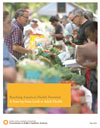 National Adult Health Chartbook (pdf) National Adult Health Chartbook (pdf) 
CHARTBOOK from the RWJF Commission to Build a Healthier America, May 2009
Reaching America's Health Potential Among Adults: A State-by-State Look at Adult Health - the second Commission chartbook investigating health across social and economic groups - examines the differences in adults’ health based on their levels of education. Nationally and in each state there is a consistent and striking pattern: as levels of education rise, health improves.
Also see the National Child Health Chartbook (pdf) |
 |
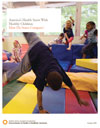 National Child Health Chartbook (pdf) National Child Health Chartbook (pdf) 
CHARTBOOK from the RWJF Commission to Build a Healthier America, October 2008 This chartbook, America's Health Starts With Healthy Children: How Do States Compare?, examines the health of children from different socioeconomic backgrounds in every state to document how healthy our nation's children are now and how healthy they could be if we as a nation were realizing our full health potential.
replicas de relogios hublot
Also see the National Adult Health Chartbook (pdf)
|
 |
 National Low Income Housing Coalition National Low Income Housing Coalition 
WEB SITE The National Low Income Housing Coalition is dedicated solely to ending America's affordable housing crisis. They believe that this is achievable, that the affordable housing crisis is a problem that Americans are capable of solving. While they are concerned about the housing circumstances of all low income people, they focus our advocacy on those with the most serious housing problems, the lowest income households. |
 |
 Neighborhood Characteristics Associated with the Location of Food Stores and Food Service Places Neighborhood Characteristics Associated with the Location of Food Stores and Food Service Places 
SCHOLARLY ARTICLE by Kimberly Morland, et al. American Journal of Preventative Medicine This study examines the distribution of food stores and food service places by neighborhood wealth and racial segregation. It finds that, compared to the poorest neighborhoods, large numbers of supermarkets and gas stations with convenience stores are located in wealthier neighborhoods. There are three times fewer places to consume alcoholic beverages in the wealthiest compared to the poorest neighborhoods. Regarding neighborhood segregation, there are 4 times more supermarkets located in white neighborhoods compared to black neighborhoods.
|
 |
 Neuroscience, Molecular Biology, and the Childhood Roots of Health Disparities: Building a New Framework for Health Promotion and Disease Prevention Neuroscience, Molecular Biology, and the Childhood Roots of Health Disparities: Building a New Framework for Health Promotion and Disease Prevention 
SCHOLARLY ARTICLE, Journal of the American Medical Association, June 3, 2009 This paper, co-authored by Drs. Jack P. Shonkoff, W. Thomas Boyce, and Bruce S. McEwen, illustrates that the origins of many adult diseases can be traced to negative experiences early in life, so confronting the causes of adversity before and shortly after birth may be a promising way to improve adult health and reduce premature deaths.
Summary of Essential Findings (pdf)
Q&A (pdf)
|
 |
 Nobody's Talking About the Silver Bullet That Could Heal the Economy and Cure Most Social Ills Nobody's Talking About the Silver Bullet That Could Heal the Economy and Cure Most Social Ills 
REVIEW of The Spirit Level: Why More Equal Societies Almost Always Do Better This article summarizes some of the key points of The Spirit Level, making a case for making fairness and equity explicit policy objectives. Contains graphs on relative income inequality across countries, correlation between health and social problems and inequality, and levels of income inequality during American history. |
 |
 Obesity, diets, and social inequalities Obesity, diets, and social inequalities 
SCHOLARLY ARTICLE by Adam Drewnowski, Nutrition Reviews, April 2009 This economic analysis of obesity concludes that inequitable access to healthy foods is one mechanism by which socioeconomic factors influence the diet and health of a population. As incomes drop, energy-dense foods that are nutrient poor become the best way to provide daily calories at an affordable cost. By contrast, nutrient-rich foods and high-quality diets not only cost more but are consumed by more affluent groups. This article discusses obesity as an economic phenomenon. Obesity is the toxic consequence of economic insecurity and a failing economic environment.
|
 |
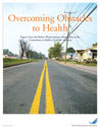 Overcoming Obstacles to Health Overcoming Obstacles to Health 
REPORT from the Robert Wood Johnson Foundation, 2013 This report by Paula Braveman and Susan Egerter for the Robert Wood Johnson Foundation Commission for a Healthier America, summarizes in clear language the current research on why Americans have worse health and shorter lives than people of other rich nations. The report analyzes the latest data and contains many useful charts.
|
 |
 Partnership for Working Families Partnership for Working Families 
WEB SITE The Partnership is an economic justice organization that works to ensure that public resources are invested in ways that are economically sound and provide a return to the community. They are working to reform development policy throughout the country so that the social and economic return on investment is tracked and reported to the public. The Partnership also seeks to secure a systematic and timely process for accomodating community input into development decisions.fausse richard mille |
 |
 Peaceful Revolution: The Last Summer (Without a Vacation) Peaceful Revolution: The Last Summer (Without a Vacation) 
EDITORIAL by John de Graaf in the Huffington Post, 2007 De Graaf comments on the findings of a recent ILO report that U.S. workers produce per capita wealth than any other country and are second most productive per hour in the world, yet more people are working longer hours just to make ends meet. After presenting statistics on how badly we compare to European countries on quality of life indicators, he makes the case for a federal mandate of three weeks paid vacation per year. |
 |
People in Poor Neighborhoods Breathe More Hazardous Particles 
Scientific American Tiny particles of air pollution contain more hazardous ingredients in non-white and low-income communities than in affluent white ones, a new study shows. |
 |
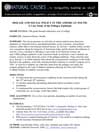 Place Matters: Exploring Our Neighborhoods Place Matters: Exploring Our Neighborhoods 
LESSON PLAN developed by California Newsreel, 2009 Students investigate their own neighborhoods and gain practice in research and analysis while drawing connections between health and a neighborhood's physical, social, service, and economic environments.
|
 |
 PolicyLink PolicyLink 
WEB SITE PolicyLink is a national research and action institute advancing economic and social equity by "Lifting Up What Works." By developing and implementing multifaceted strategies, PolicyLink seeks to ensure that everyone—including low-income communities of color—can contribute to and benefit from local and regional growth and development. |
 |
 Politics and Health Politics and Health 
VIDEO PRESENTATION by Dennis Raphael, December 14, 2006 Dr. Raphael was part of a featured research symposium at the Center for Health Disparities in Cleveland, Ohio, that highlighted new information on the mechanisms of health disparities and interventions to reduce disparities.
Best UK Replica Watches Store: top fake watches uk
Buy Swiss Perfect Fake Breitling, Cartier, Omega cheap replica watches uk |
 |
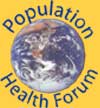 Population Health Forum Population Health Forum 
University of Washington, School of Public Health & Community Medicine The Population Health Forum is a group of academics, citizens, students, and activists across several nations who work to build support for changing the rules of society so that better orologi replica health comes naturally. Their website includes a library of great articles and resources to learn more and use in public education, and lists steps you can take towards closing the enormous wealth gap in the United States. |
 |
 Poverty & Race Research Action Council Poverty & Race Research Action Council 
WEB SITE PRRAC is a civil rights policy organization convened by major civil rights and anti-poverty groups in 1989. PRRAC's primary mission is to help connect social scientists with advocates working on race and poverty issues, and to promote a research-based advocacy strategy on issues of structural racial inequality.
|
 |
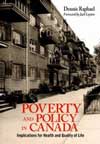 Poverty and Policy in Canada: Implications for Health and Quality of Life Poverty and Policy in Canada: Implications for Health and Quality of Life 
BOOK by Dennis Raphael Poverty and Policy in Canada provides a unique, interdisciplinary perspective on poverty and its importance to health and quality of life. This original volume considers a range of issues that will be of great interest to a variety of audiences —Social Work, Health Sciences, Sociology, Political Science, Policy Studies, Nursing, Education, Psychology, and the general public. This new book has three, replicas relojes de lujo straight-forward goals:
• to provide a range of approaches for understanding poverty and its effects
• to help readers understand the structural antecedents of poverty – that is, how society and its distribution of resources are the primary determinants of poverty
• to provide realistic solutions to poverty |
 |
Poverty As A Childhood Disease 
Blog post by Dr. Perri Klass at the New York Times "Well" blog
"Think for a moment of poverty as a disease, thwarting growth and development, robbing children of the healthy, happy futures they might otherwise expect. In the exam room, we try to mitigate the pain and suffering that are its pernicious symptoms. But our patients’ well-being depends on more, on public health measures and prevention that lift the darkness so all children can grow toward the light." |
 |
 Prevention Institute Prevention Institute 
WEB SITE Prevention Institute is a non-profit national center dedicated to improving community health and well-being by building momentum for effective primary prevention. Primary prevention means taking action to build resilience and to prevent problems before they occur. The Institute's work is characterized by a strong commitment to community participation and promotion of equitable health outcomes among all social and economic groups. Since its founding in 1997, the organization has focused on injury and violence prevention, traffic safety, health disparities, nutrition and physical activity, and youth development. |
 |
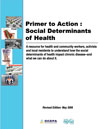 Primer to Action: Social Determinants of Health Primer to Action: Social Determinants of Health 
REPORT by the Ontario Prevention Clearinghouse, 2007 This resource is for health professionals, lay workers, volunteers and activists. It’s for you and your organization, but also for your family, and your community. We will focus on six key determinants of health: income, education, employment, housing, food, and inclusion. The Primer to Action will show you:
1) where you can find more information about each of six determinants;
2) how you can work on the determinants in your agency;
3) who you can learn from, with examples and models; and
4) what you can do in your community. |
 |
| « Prev 1 | 2 | 3 | 4 | 5 | 6 | 7 Next » |
|




